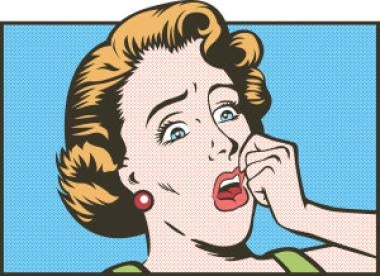We recently reported that in a landmark decision, the US Court of Appeals for the Federal Circuit found that the Lanham Act’s prohibition on the registration of disparaging marks violates the First Amendment right to free speech. Not only did this decision pave the way to registration for owners of potentially disparaging marks, but it also left the door open for a similar challenge with respect to the related categories of “immoral” or “scandalous” marks.
That door was flung wide open in an appeal to the Federal Circuit over the US Patent and Trademark Office’s (PTO) refusal to register the mark “FUCT” on the grounds it was scandalous.
To be considered “scandalous” under the Lanham Act, evidence must show that a substantial portion of the general public would consider the mark to have a vulgar meaning or to be scandalous in the context of contemporary attitudes and the relevant marketplace. In this case, the PTO Examining Attorney produced significant evidence to support just this, including dictionary definitions of the well-known phonetic equivalent of the mark, and ultimately refused registration. This decision was affirmed by the Trademark Trial and Appeal Board (TTAB), although it did state:
It is abundantly clear that the Trademark Trial and Appeal Board is not the appropriate forum for re-evaluating the impacts of any evolving First Amendment jurisprudence within Article III courts upon determinations under Section 2(a) of the Lanham Act.
The applicant took the next step and appealed the decision to the Federal Circuit.
During the course of the appeal and after the Court’s decision with respect to disparaging marks, the Department of Justice (DOJ) submitted a letter brief in which it agreed that the case should be vacated and remanded for further proceedings, stating:
the reasoning of Tam requires the invalidation of Section 2(a)’s prohibition against registering scandalous and immoral marks as well…. we do not believe that Section 2(a)’s prohibition on registration of scandalous and immoral marks can withstand challenge under the current law of this Circuit.
Although the DOJ conceded that this other provision is no longer enforceable following Tam, the door is far from shut on this issue. Indeed, the DOJ expressly stated “the United States believes that Tam was wrongly decided and is considering whether to seek review of that decision in the Supreme Court.” Futher, the DOJ stated that if Supreme Court review is sought:
the government may argue that, under reasoning less sweeping than that adopted in Tam, the bar on registration of scandalous and immoral marks would survive even if the bar on registration of disparaging marks were held invalid (or vice versa).
So does anything remain of Section 2(a) of the Lanham Act? Yes indeed, this section also prohibits registration of matter that “falsely suggests a connection with persons, living or dead, institutions, beliefs, or national symbols,” and of a geographical indication which, when used with wine or spirits, identifies a place other than the origin of the goods. These provisions are likely to remain, in that they align precisely with the basic principles of our trademark system. Afterall, the function of a trademark is to distinguish a mark owner’s goods and services from those of others, and a goal of trademark law is to prevent consumer confusion stemming from the use of those marks.
Although these decisions on disparaging, scandalous, and immoral marks may not be applicable to the vast majority of trademark owners, they do demonstrate the power of the First Amendment, and its ability to erode away what some thought were iron-clad provisions of trademark jurisprudence.
Who knew trademark law could be so, well, scandalous.




 i
i


